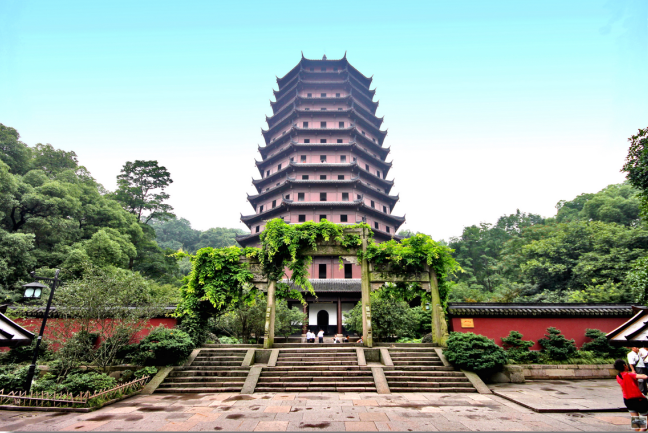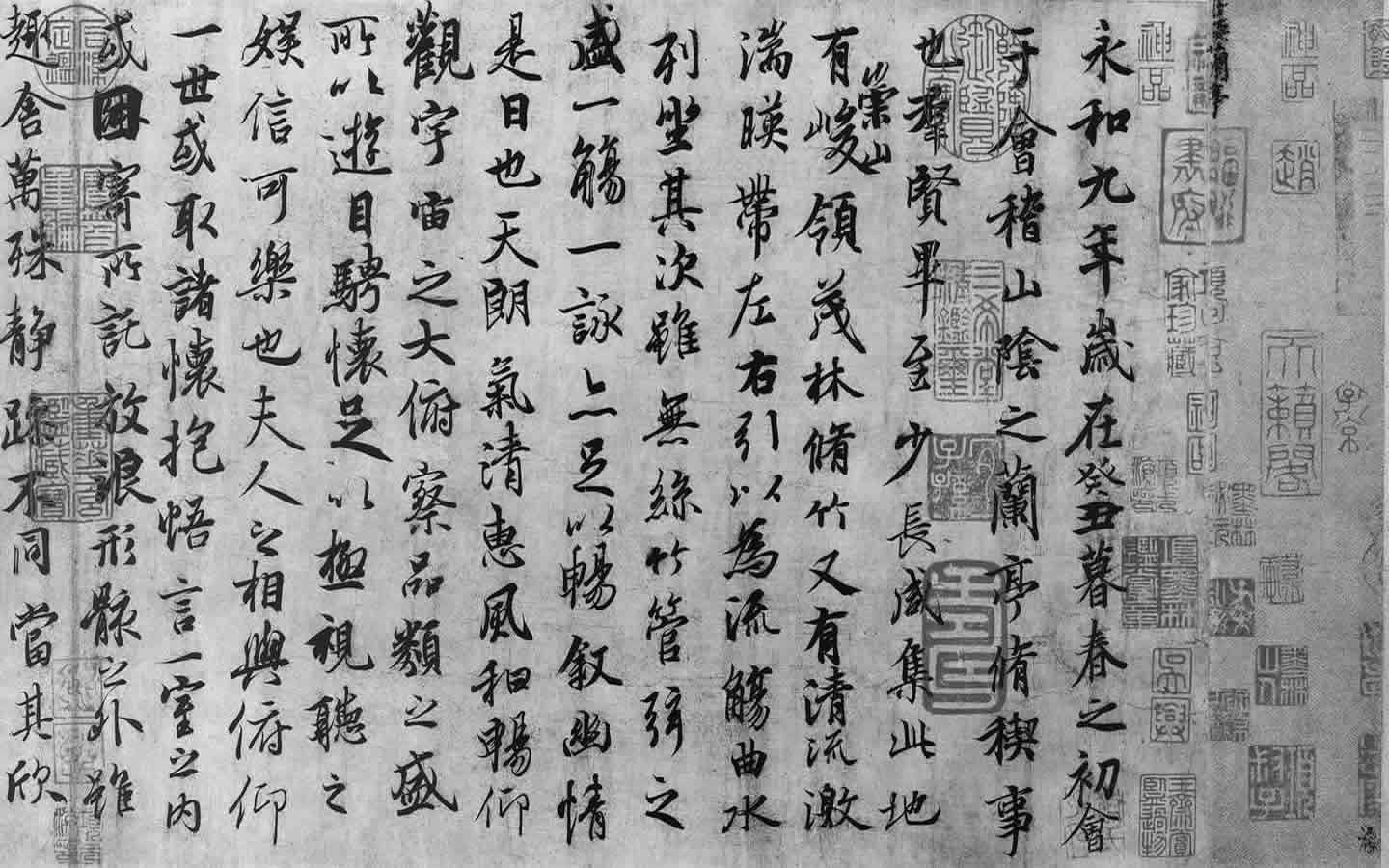Pronounced Liuhe Pagoda in Chinese, it is located at the foot of Yuelun Hill, facing the Qiantang River. It was originally constructed in 970 AD, destroyed in 1121, and reconstructed fully by 1165. After the current pagoda was constructed of wood and brick during the Southern Song dynasty, additional exterior eaves were added during the Ming (1368–1644) and Qing Dynasties (1644–1911). The pagoda is octagonal in shape and some 59.89 metres (196.5 ft) in height; it also has the appearance of being a thirteen-storey structure, though it only has seven interior stories. There is a spiral staircase leading to the top floor and upon each of the seven ceilings are carved and painted figures including animals, flowers, birds and characters. Each story of the pagoda consists of four elements, the exterior walls, a zigzagged corridor, the interior walls and a small chamber. Viewed from outside, the pagoda appears to be layered-bright on the upper surface and dark underneath. That is a harmonious alternation of light and shade.



